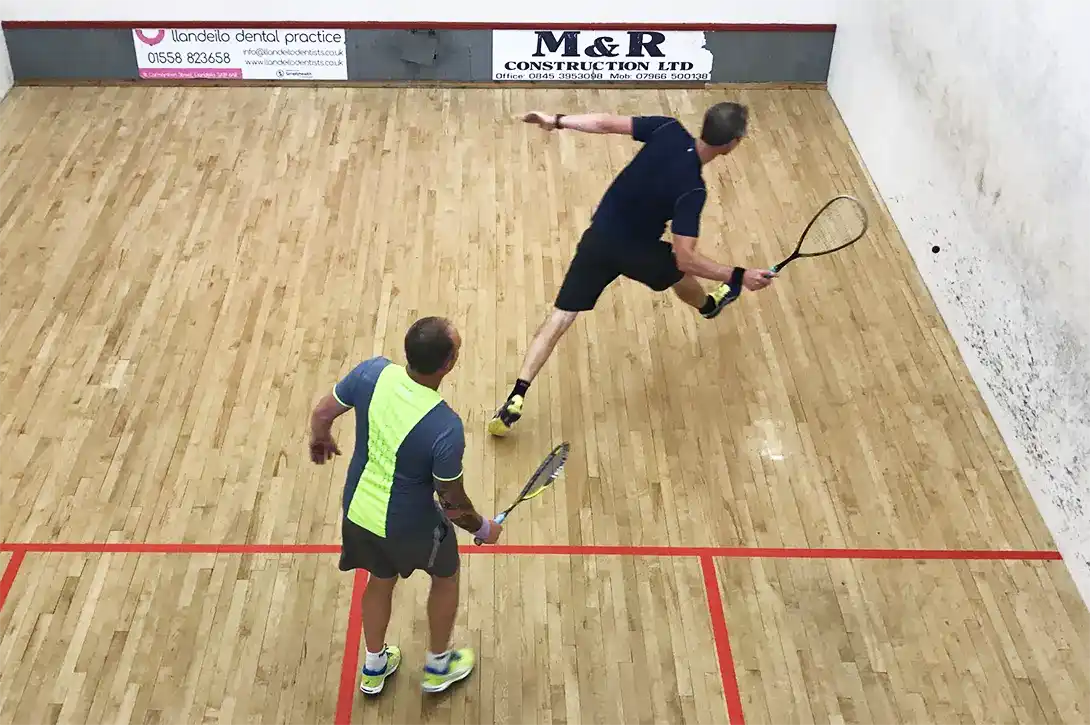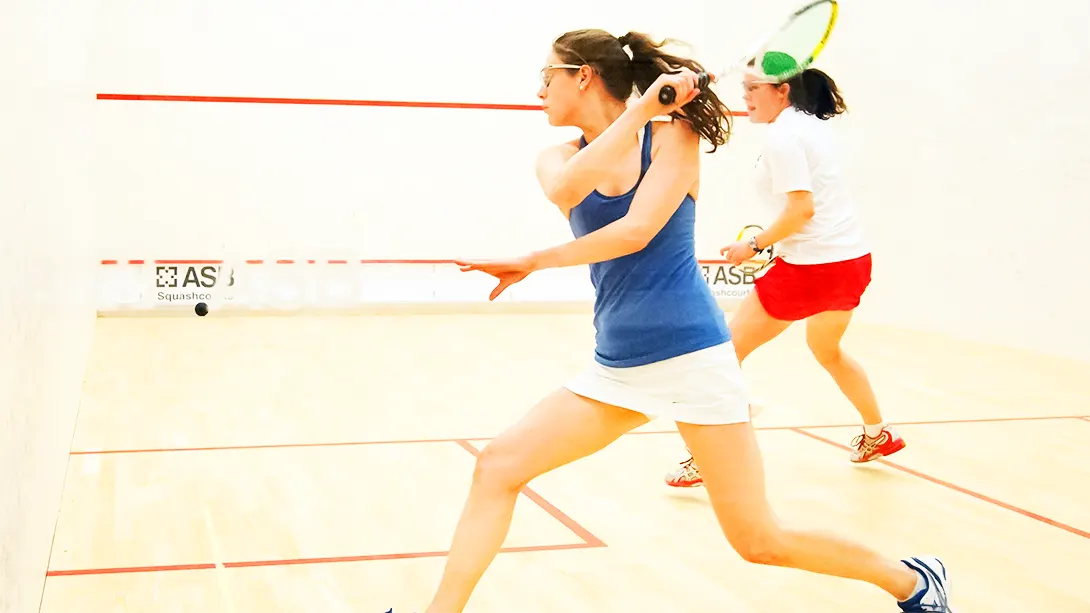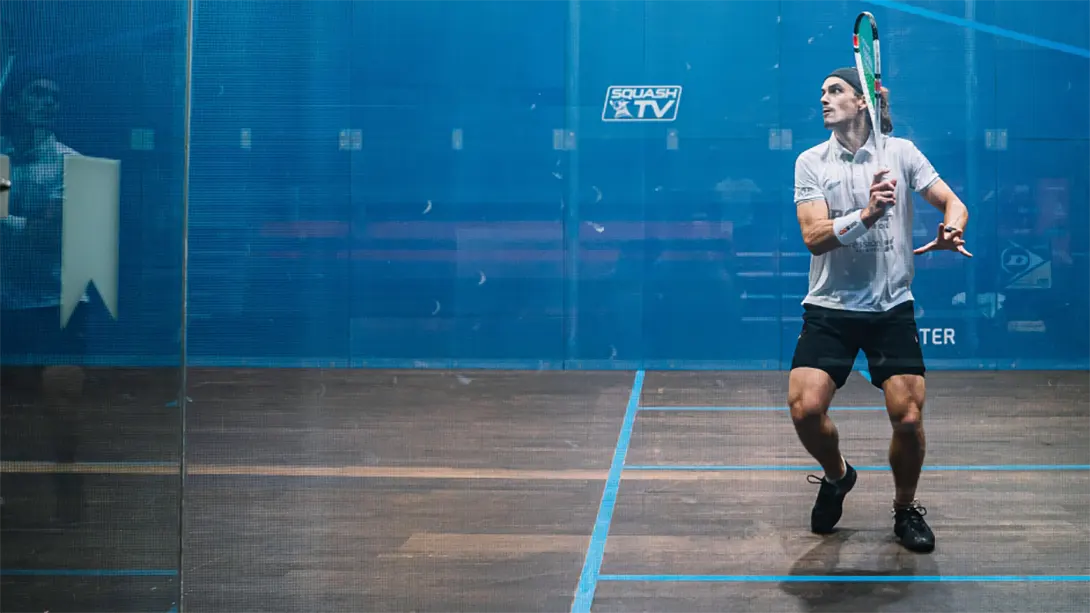11 October 2022 / 3-Min Read / Translate
This article is not aimed at beginners. You really need to be able to hit the ball off the back wall to ensure that you can keep the rallies going. By all means try it if you are a beginner, but you are probably better off doing other conditioned games at this stage in your development.

Keep It simple and straight
The condition for this game is that you can only (at least initially) only hit the ball straight and within the service box’s width. Ideally, you would have placed some insulating tape along the floor in front of the short line to act as a guide (not all the way from short line to front wall though, but little strips). The ball can be hit any length, as long as it’s within the service box width.
You can start with a regular serve on the opposite side of the wall you are using and then just play straight. So there’s the first benefit: improved service return. You are not allowed to play crosscourt, so you have to play straight. The second benefit is learning to move around each other while ensuring you can cover their shots. Because you know more or less where the ball is going, it is easy to not move back to near the T and get in the way, so this conditioned game takes a little practice.
Knowing you can only hit straight often means you are more focused on your shot and the quality goes up a little. The key point to learn from this is that early decision making often results in better shots. You will also get to practice varying the speed of you shots and playing short shots that are solely designed to move your opponent forward.
Tightness is often what wins rallies in this game, rather than power or disguise. You should try to push you opponent deep and then play a short shot when they are out of position, but not millimetres above the tin because that margin is too fine. Patience is required to play this game well, so don’t try to make every short shot a winner – think of them as movers.
I’ve already mentioned varying the pace of your shots, so don’t forget high drives – not exactly lobs, but almost. they can give you time to recover and make life difficult for your opponent, especially if they aren’t allowed to volley – see below.

Playing this conditioned game will improve your matchplay
While it’s possible to reduce the width available to each or one of the players, often the best progression is limiting shots. But let’s quickly talk about widths. It is possible for one player to have the whole half of the court and the other only the service box, or even one player the service box and the other half the service box width. The second requires more tape on the floor to ensure you know what’s in and what’s not.
Anyway, back to limiting shots. For example, the server is not allowed to volley, besides their serve of course, or the returner is not allowed to volley – so no volleys, either for one player or both. No volleys is quite a difficult progression though. Another variation is one or both players have limited short shots available. This can focus the mind to selecting the best opportunity to play short, not just the first opportunity. For example, only one shot within the front third of the court.
If you are playing this conditioned game for the first time, forget anything except trying to keep it tight. In fact, don’t even worry about the width too much, just learn to build a rally by both of you keeping the ball tight and moving around your opponent. Remember, don’t stand at the back otherwise you will be in the way. Hit and move is your mantra and try to get in front of your opponent so that you could volley if you wanted to.
You are building up skill, both in shots and movement, as well as increasing your patience. It’s not a particularly fitness-demanding drill, so this might be good for players returning after a break or having been injured.

Pual Coll practicing his straight volleys
If you normally use a double yellow dot to play squash, do this drill with a single yellow dot, and if you normally use a single yellow dot to play squash, use a red dot for this drill. Why? Because in general, players don’t hit the ball as hard and it doesn’t get as hot as a normal game. Use the ball I suggest and if you find it too bouncy, either move up to the next one, or use that bounciness as practice learning to control the ball in hot conditions – it’s great practice.
As I have already mentioned, make sure you move partly back to the T so that you can cover your opponent’s shots, but also to stay safe. In some conditioned games, it’s easy to get lazy with your movement and find yourself in your opponent’s way. That’s why this drill is great for your movement, both learning to move around your opponent, but also forward and backwards.
Play a competitive game like this. Stay on one side for each of the first two games and then play the third game as another conditioned game or full court. Swap sides after the first game. if you feel able, you could even play this game without your opponent knowing. Just impose the “straight only” condition on yourself and let you opponent swap sides by hitting crosscourts or boasts.